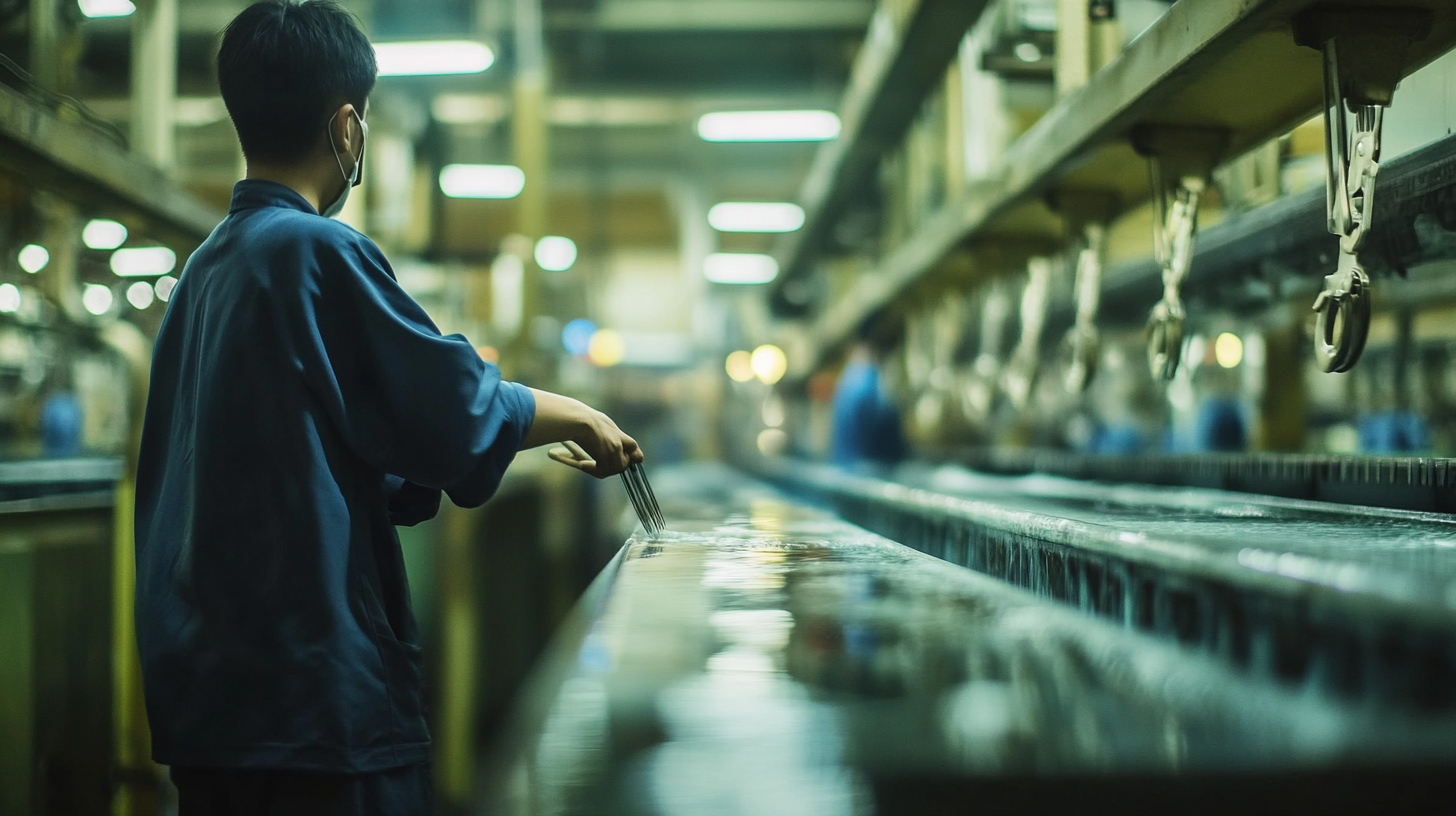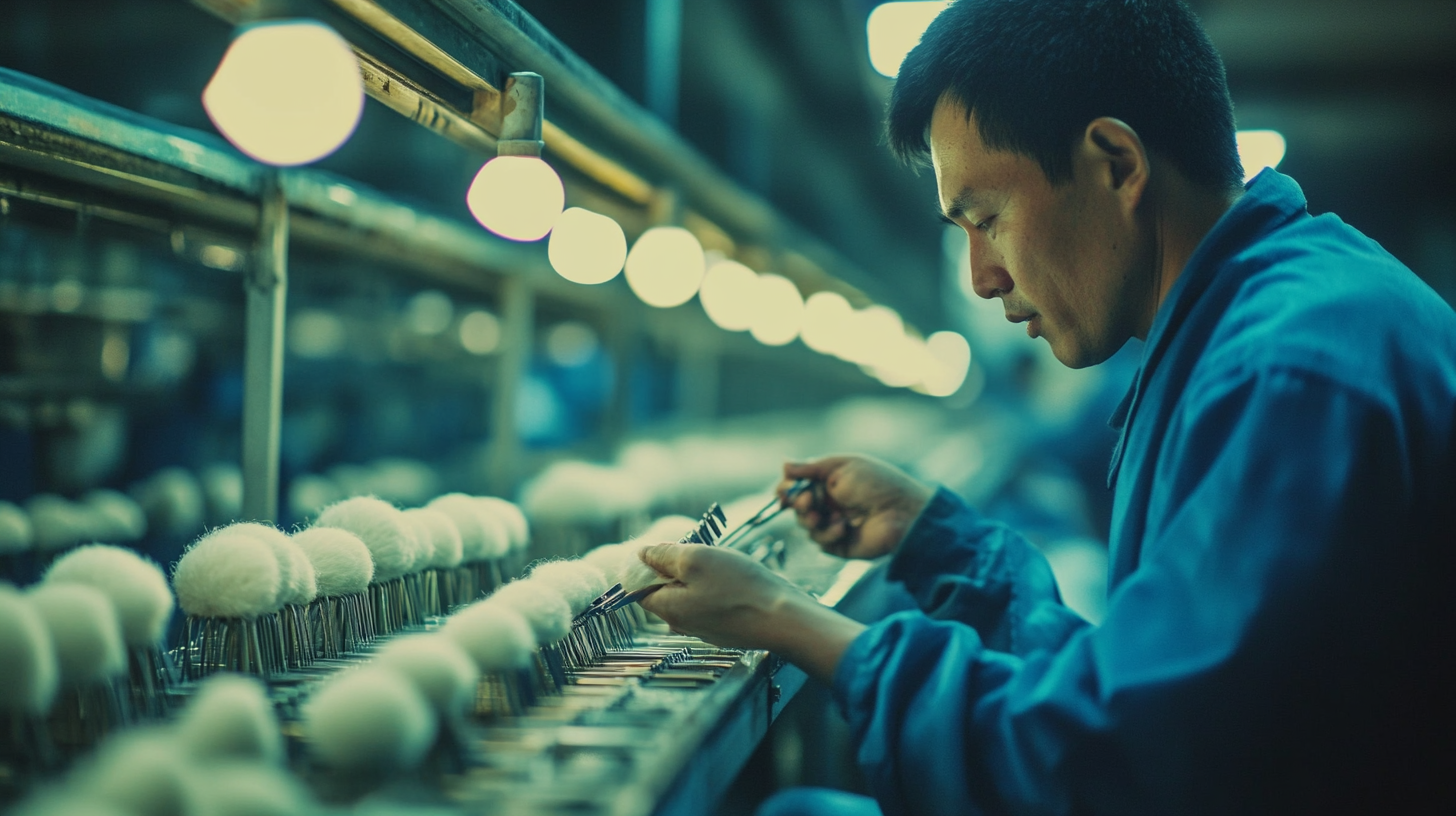Amidst increasing economic challenges and trade tensions, the Chinese manufacturing sector, particularly in the hair clip industry, has demonstrated remarkable resilience and growth. A recent report by Research and Markets indicates that the global hair clip market is projected to expand at a compound annual growth rate (CAGR) of 5.7% through 2025, with a significant portion of this growth attributed to innovative products designed for specific consumer needs, such as Hair Clips For Long Hair. Despite the imposition of equal tariffs between the U.S. and China, Chinese manufacturers have adapted by enhancing their production processes and expanding their product range to capture a larger share of the market. This strategic approach not only mitigates the impact of tariffs but also aligns with evolving consumer preferences, driving the demand for premium and multifunctional hair accessories, including those catered to long hairstyles.

The hair clip industry is witnessing a complex interplay between economic challenges and the evolving landscape of tariffs, especially between China and the United States. As trade tensions escalate, the imposition of tariffs has forced manufacturers to reevaluate their supply chains and pricing strategies. In the US market, higher tariffs on Chinese imports have led to increased costs, prompting American retailers to seek alternative sources. However, many have found that the quality and price competitiveness of Chinese hair clips remain hard to match, resulting in a nuanced dependence on Chinese supply.
Chinese manufacturers have displayed remarkable resilience amid these challenges. By adapting quickly to changing market conditions, they have implemented cost-cutting measures and optimized production processes, allowing them to sustain their market presence. Moreover, some companies are diversifying their export markets to mitigate risks associated with US tariffs. This pivot not only helps in preserving their revenue streams but also enhances their global competitiveness. Ultimately, the hair clip market serves as a microcosm of the broader economic dynamics between China and the US, highlighting the ongoing challenges and adaptations within global trade.

In the face of rising economic pressures and shifting global dynamics, Chinese manufacturers in the hair clip industry are employing innovative strategies to maintain resilience and growth. Despite geopolitical tensions and the trend of "de-risking" from China observed among major economies, industry players are leveraging their position within global supply chains to enhance productivity and reduce costs. Recent data indicates that the Chinese manufacturing sector has seen a compound annual growth rate (CAGR) of 7.5% over the last five years, demonstrating the sector's adaptability and commitment to overcoming challenges.
One critical strategy employed by these manufacturers is the emphasis on technological advancements and product innovation. In 2023, investments in R&D have surged by over 15%, allowing companies to develop new materials and designs that appeal to a broader international market. Furthermore, collaborations with domestic universities have intensified, yielding an influx of cutting-edge ideas and enabling manufacturers to respond swiftly to consumer trends. This proactive approach is crucial not only for maintaining competitiveness against international players but also for reinforcing China's position as a leading innovator in advanced industries. As manufacturers continue to focus on sustainability and efficiency, their ability to thrive amidst economic pressures will redefine the landscape of the hair clip industry.
| Year | Market Growth Rate (%) | Export Volume (Million Units) | Domestic Sales (Million Units) | Top Manufacturer |
|---|---|---|---|---|
| 2019 | 3.5 | 150 | 130 | Xiangjin Co. |
| 2020 | 2.0 | 140 | 120 | Haojie Group |
| 2021 | 4.0 | 160 | 140 | Yunhu Co. |
| 2022 | 5.5 | 170 | 150 | Tongxin Ltd. |
| 2023 | 6.0 | 180 | 160 | Zhengfu Inc. |
Chinese manufacturing in the hair clip industry has demonstrated remarkable resilience, particularly driven by innovation and quality. As the global economy presents numerous challenges, local manufacturers have pivoted towards creative designs and advanced production techniques, setting their products apart from competitors. Embracing new technologies, such as automated production lines and sustainable materials, has allowed these companies to enhance efficiency while reducing environmental impact. This commitment to innovation not only caters to evolving consumer preferences but also strengthens the overall brand reputation of Chinese hair clip products.
Quality plays a crucial role in the success of Chinese manufacturers in this sector. By adhering to strict quality control measures and international standards, they have cultivated trust among global consumers. Many manufacturers have invested in research and development to improve product durability and functionality, ensuring that their hair clips are not only stylish but also practical. This dedication to superior quality has positioned Chinese hair clips as desirable choices in both domestic and international markets, ultimately contributing to the sector's robust growth amid economic uncertainty.

The hair clip industry in China has shown remarkable resilience amidst various economic challenges, driven in part by shifting consumer preferences. According to a recent report from Statista, the global hair accessories market is projected to grow to approximately $8 billion by 2027, with a significant contribution from China, which currently dominates around 40% of the market share. This growth is largely fueled by younger consumers increasingly prioritizing style and functionality in their hair accessories, favoring brands that offer innovative designs and sustainable materials.
Furthermore, insights from Mintel highlight the trend of eco-conscious purchasing as a major influence on consumer behavior within the industry. Over 60% of Chinese consumers reported a preference for brands that emphasize sustainability in their product lines. This has prompted Chinese manufacturers to adapt by integrating environmentally friendly materials and production processes, thereby meeting the evolving demands of the market. As a result, manufacturers are not only focusing on aesthetic appeal but are also cultivating a reputation for sustainability, ensuring their competitive edge in the ever-changing landscape of the hair clip sector.
The future of Chinese hair clip manufacturing appears bright, even as the sector navigates an array of economic challenges. The global beauty industry is witnessing a shift in dynamics, creating emerging opportunities for growth. As consumer demand leans towards personalized beauty solutions, Chinese manufacturers are well-positioned to adapt, crafting innovative and customized hair clips that cater to individual tastes. This adaptability not only aligns with the global trend towards bespoke products but also enhances the competitive edge of Chinese manufacturers in the international market.
Moreover, while trade disputes and rising production costs pose significant hurdles, the resilience of China's manufacturing sector is noteworthy. With the beauty boom continuing to unfold, the hair clip industry can capitalize on these trends by integrating advanced manufacturing techniques and smart technologies. As the industry evolves, manufacturers in China are likely to explore partnerships and adopt strategies that foster sustainable growth, ensuring they remain at the forefront of the global beauty market amidst uncertainty.
This chart illustrates the growth in production volume of the Chinese hair clip manufacturing industry over the past five years, highlighting the resilience and adaptation strategies in response to economic challenges.
